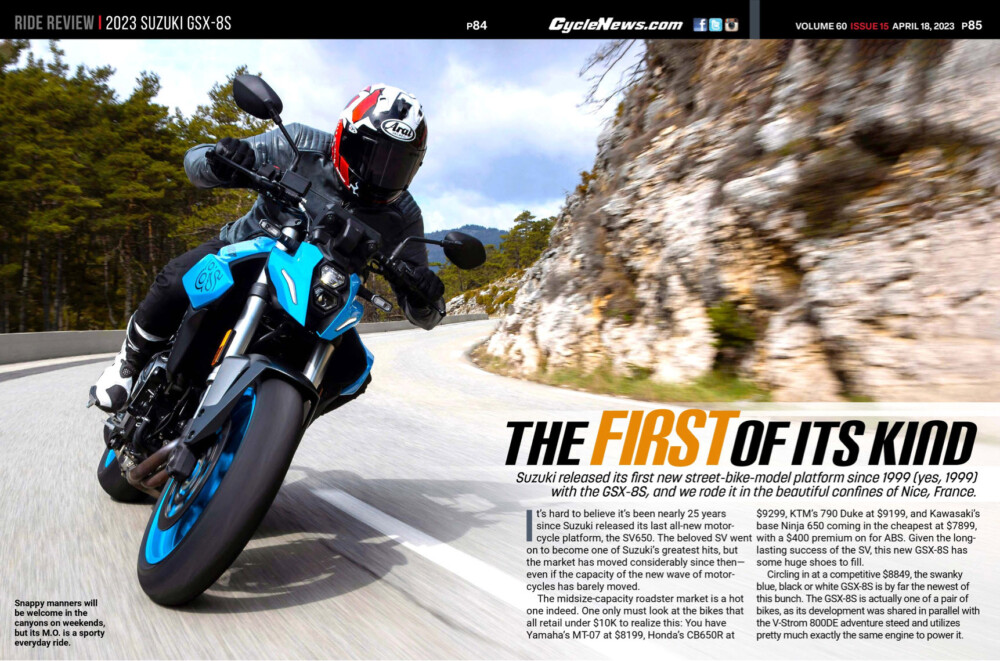Rennie Scaysbrook | April 21, 2023
Suzuki released its first new street-bike-model platform since 1999 (yes, 1999) with the GSX-8S, and we rode it in the beautiful confines of Nice, France.
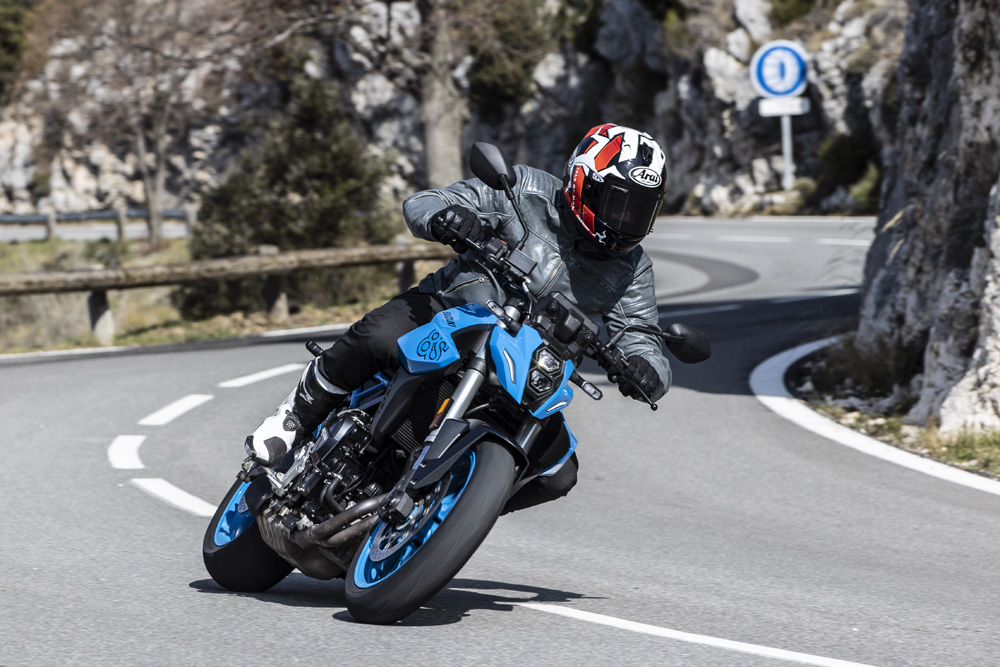 Sleek, sharp and a ton of fun. The new Suzuki GSX-8S will be a big hit, especially with newer riders.
Sleek, sharp and a ton of fun. The new Suzuki GSX-8S will be a big hit, especially with newer riders.
Photography by Julien Lacroix
It’s hard to believe it’s been nearly 25 years since Suzuki released its last all-new motorcycle platform in the SV650. The beloved SV went on to become one of Suzuki’s greatest hits, but the market has moved considerably since then—even if the capacity of the new wave of motorcycles has barely moved.
The midsize-capacity roadster market is a hot one indeed. One only must look at the bikes that all retail under $10K to realize this: You have Yamaha’s MT-07 at $8199, Honda’s CB650R at $9299, KTM’s 790 Duke at $9199, and Kawasaki’s base Ninja 650 coming in the cheapest at $7899, with a $400 premium on for ABS. Given the long-lasting success of the SV, this new GSX-8S has some huge shoes to fill.
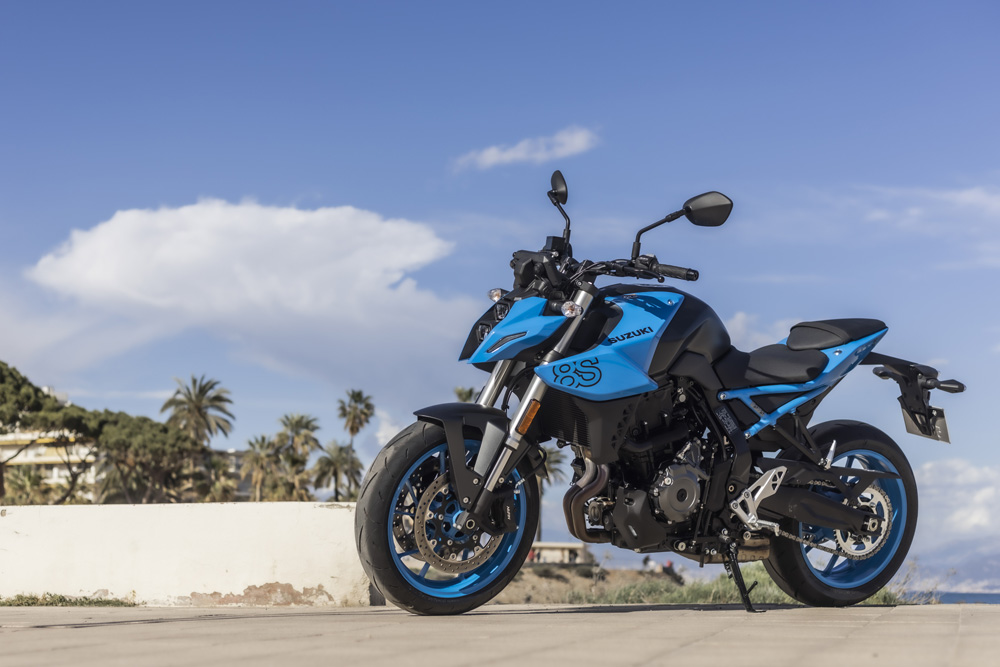 Those blue colors got us thinking of the French Riviera. Oh, wait…
Those blue colors got us thinking of the French Riviera. Oh, wait…
Circling in at a competitive $8849, the swanky blue, black or white GSX-8S is by far the newest of this bunch. The GSX-8S is actually one of a pair of bikes, as its development was shared in parallel with the V-Strom 800DE adventure steed and utilizes pretty much exactly the same engine to power it.
That’s a 776cc parallel-twin with a 270° firing order that’s a completely new job from the guys and girls in Hamamatsu. However, it’s different from most other bikes in this class. It runs twin counterbalancers rather than the near-ubiquitous single balancer setup with counterweights for each piston favored by nearly everyone else with a parallel-twin engine (except KTM, which employs two shafts on the 790).
Dubbed the Suzuki Cross Balancer, patented by Suzuki and used for the first time on a production motorcycle, the system works by running a vibration-killing balancer for each cylinder running at 90° to each other below and in front of the crankshaft. Suzuki feels the extra complexity of a twin-balancer system that helps kill off as many of the first and secondary vibrations as possible is worth it over the weight disadvantage the GSX-8S motor has to its competitors.
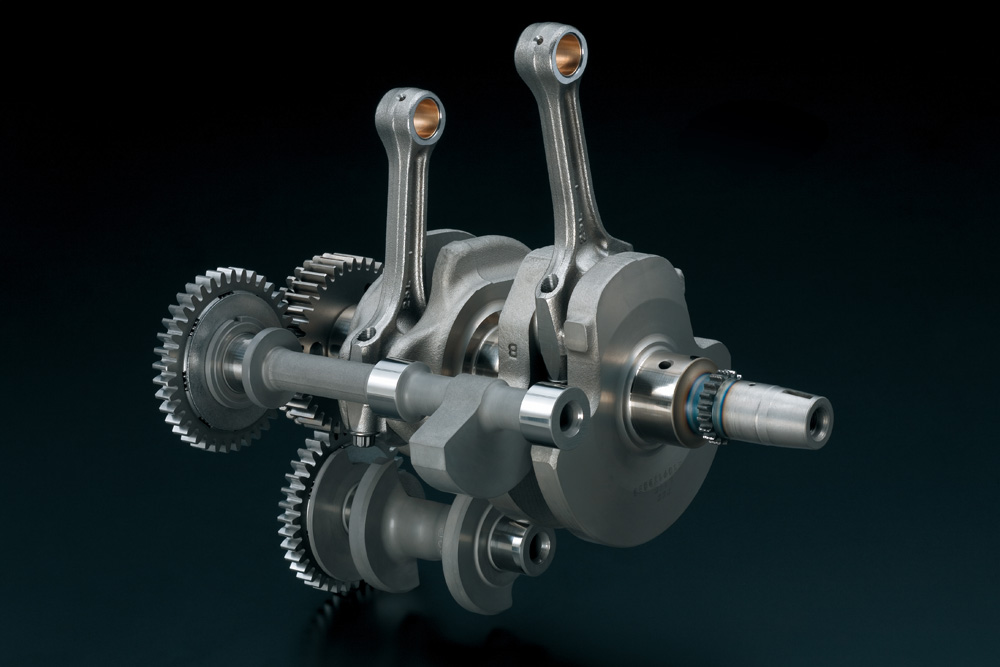 Suzuki’s twin-counterbalancer crankshaft. Suzuki says it’s worth the extra weight to get rid of more vibrations than a single balancer setup. They might be right.
Suzuki’s twin-counterbalancer crankshaft. Suzuki says it’s worth the extra weight to get rid of more vibrations than a single balancer setup. They might be right.
The result is an engine that’s exceptionally smooth at low to medium rpm. Truth be told, it’s smooth all the way to redline, but the best performance is found when the revs are situated below 8000 rpm.
This motor has been designed not for the next Twins Cup race (although I’m sure we’ll see it on the grid once it’s homologated). It’s more for enjoyable street performance, one that lets you hold gears and not dance up and down on the six-speed gearbox that comes with a quickshifter fitted as standard, but still lets you rag out the good times when you hit the canyons on the weekends.
You can be lazy and lug this little twin around town. Sub-5000 rpm torque is exceptionally smooth (there’s that word again)—you can leave it in a higher gear than you’d typically expect and just let the motor pull you from point to point, as we did in the endless traffic of the French Riviera. (See how hard we work for these reviews?)
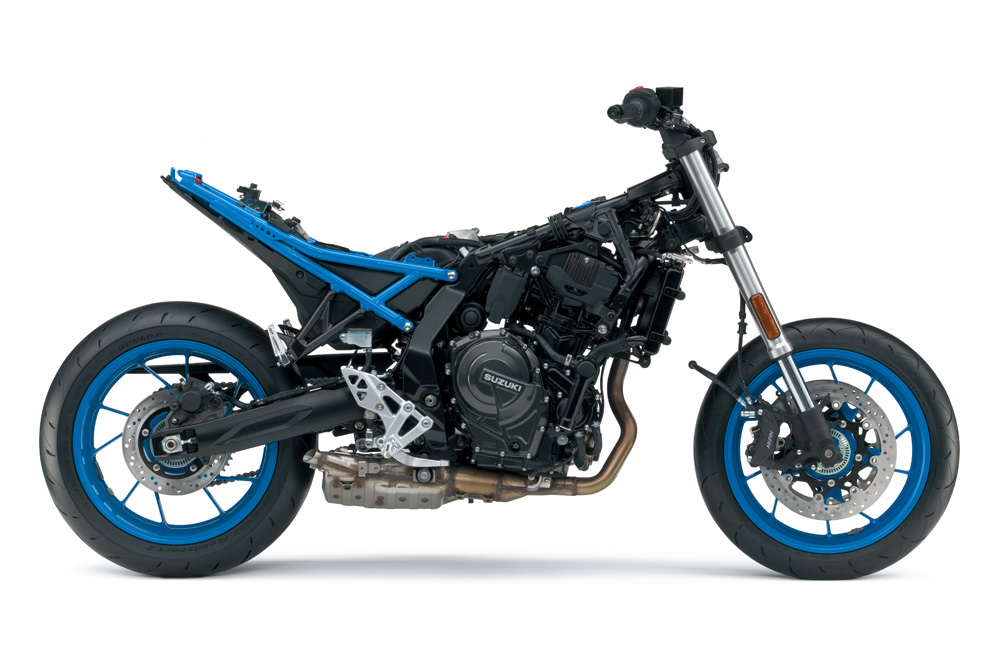 Hey, dude, where’s my airbox?
Hey, dude, where’s my airbox?
This quite flexible performance is mated to three modes of the full gas A, standard B, and wet/rain mode of C. I can only see a few riders venturing into C mode, even in the wet, as B offers good acceleration without it being too abrupt. However, most riders will hang out in the premier A mode. This mode provides the sharpest point-to-point acceleration and is quite a step up from B mode; plus, the motor is so creamy smooth at its core that I don’t think having variable modes is even required on this bike.
It’s quite a compact engine with a relatively quiet note to the stumpy little exhaust exiting at the back of the rider’s right boot. The exhaust runs a dual-stage catalytic convertor neatly ensconced under the engine with just the black endcap showing. Suzuki’s done an excellent job of packaging everything as neatly as they have. You can find little bits of space around the chassis that would otherwise be taken up by larger motor components.
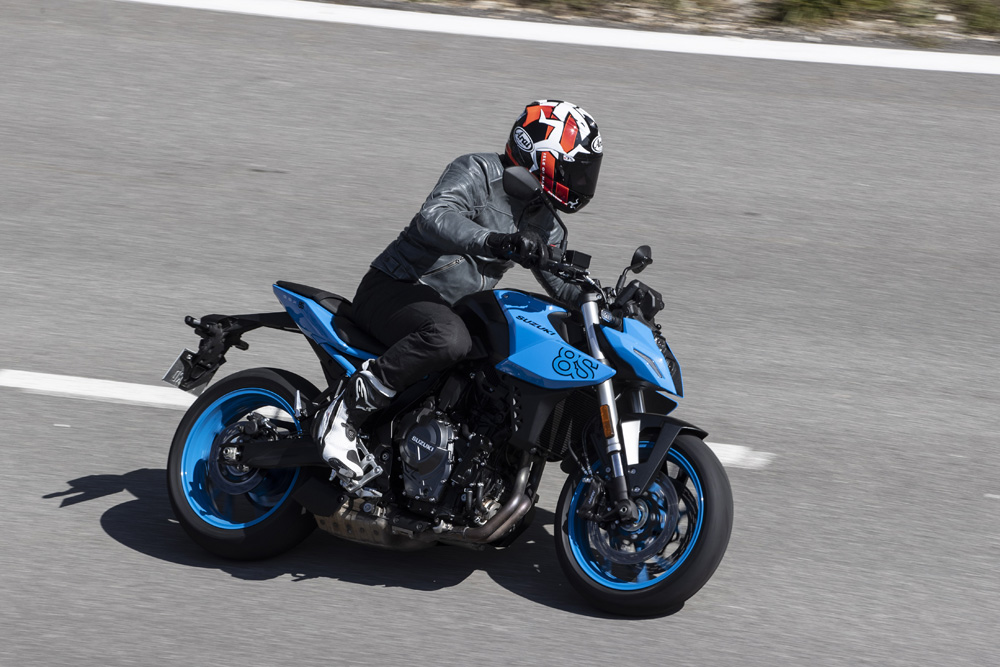 The Suzuki’s rider triangle measurements will suit longer-legged riders.
The Suzuki’s rider triangle measurements will suit longer-legged riders.
The engineers have moved the airbox from the top of the motor, as per conventional wisdom, to between the tubular steel frame rails, allowing the engineers to make the gas tank slim and long. This offers quite a rangy riding position compared to something like an MT-07, so it’ll be handy for taller riders (i.e., around six feet tall).
The running gear is typical of the class with a non-adjustable inverted fork up front and preload-adjust only on the monoshock. The first order of business was a couple of turns of rear preload as I’m, err, slightly larger than the Japanese test rider who signed off on this bike.
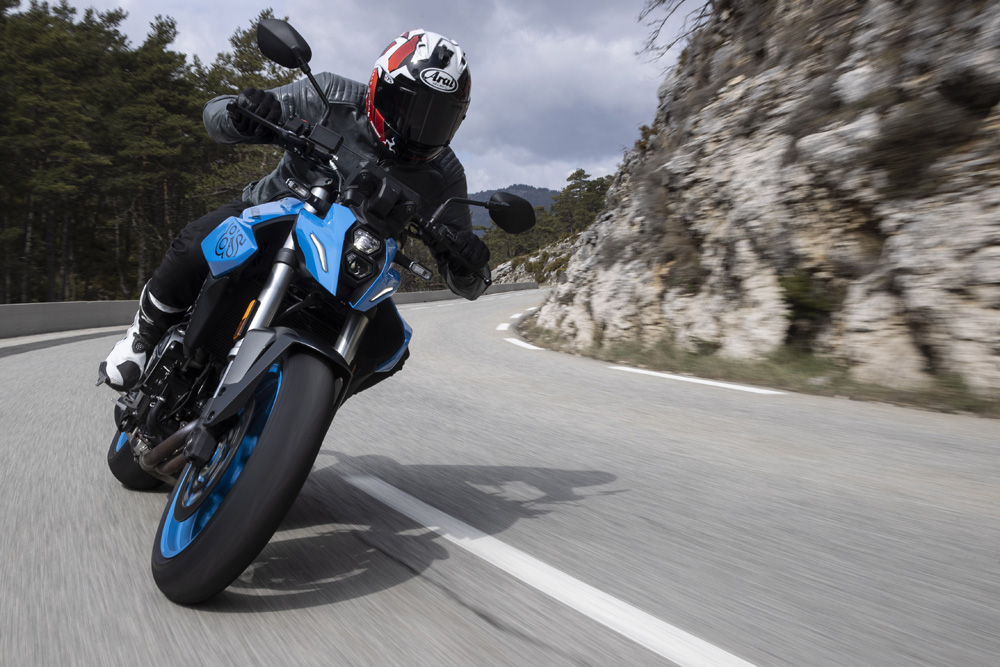 Snappy manners will be welcome in the canyons on weekends, but its M.O. is a sporty everyday ride.
Snappy manners will be welcome in the canyons on weekends, but its M.O. is a sporty everyday ride.
Despite this, the ride is smooth and stable without being overly flashy in what it can do on the road. Start to really explore your sporting prowess, and you’ll hit the limits of the suspension and the Dunlop Roadsmart rubber quite quickly. However, you can still take the GSX-8S for a good strap, and it’ll withstand most of your punishment. Just remind yourself this bike will offer a different kind of performance than you’ll get out of an $11,000 KTM 890 Duke, for example.
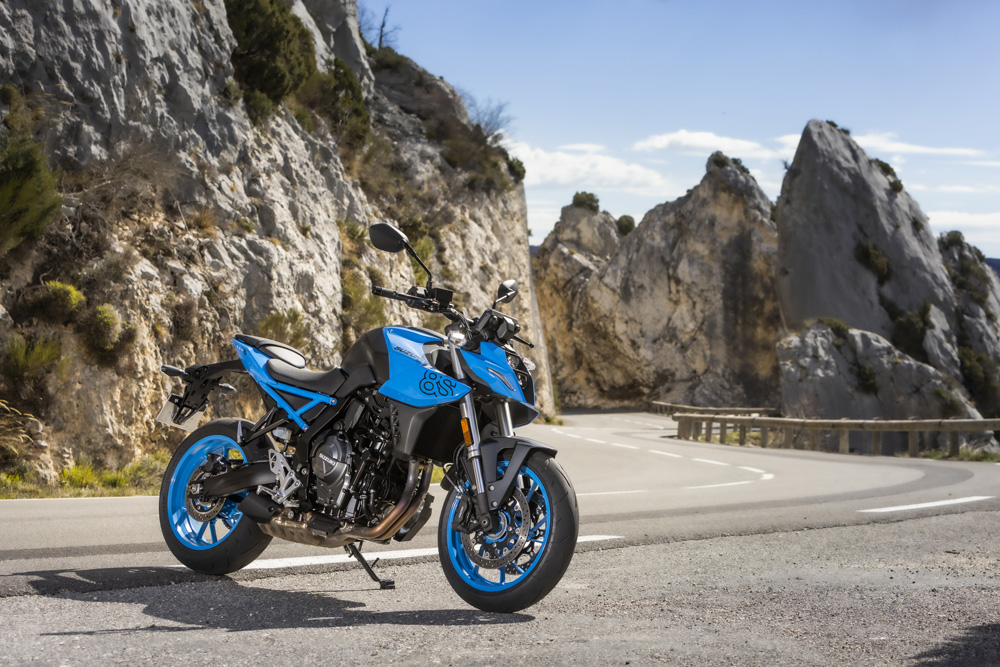 Unadjustable front suspension isn’t as horrid as it sounds and provides good ride support in most conditions.
Unadjustable front suspension isn’t as horrid as it sounds and provides good ride support in most conditions.
The brakes are four-piston Nissin monoblocs up front squeezing two 310mm discs and a single-piston caliper clamping on a 240mm rear disc with ABS. There is no lean-angle Cornering ABS on this bad boy—the class and price point see to that—but the brakes work pretty well. I didn’t experience any fade over a spirited run back down the mountain from our shooting point.
On the tech side, Suzuki has thankfully fitted a five-inch TFT display that’s light-years ahead of what you’ll get on the GSX-S1000 naked bike—it’s easy to use, but there are only the three riding modes and the three (plus Off) traction control maps that you can adjust from a performance standpoint, and no IMU-controlled stuff you need to fiddle with. It does the job nicely and gives the Suzuki quite a premium feel.
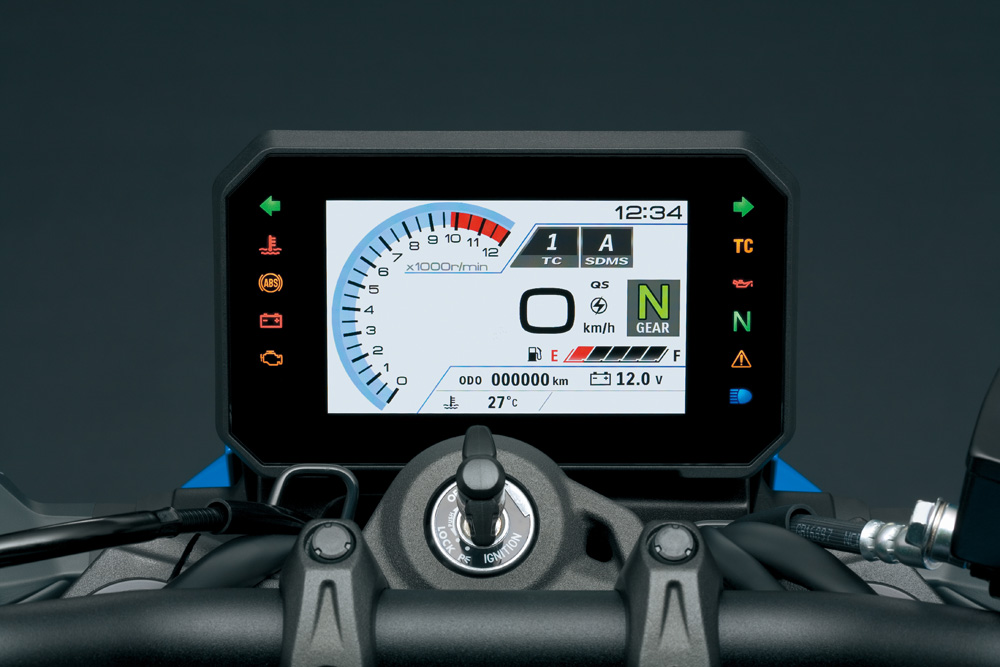 Suzuki’s now formally joined the rest of the world in the TFT dash era. Thank the Lord.
Suzuki’s now formally joined the rest of the world in the TFT dash era. Thank the Lord.
One area Suzuki has done exceptionally well is styling. That long and slim tank has been joined by cool little radiator guards, an edgy LED headlight with low-beam cut-outs on either side, and that exposed aluminum subframe. Plus, I absolutely love the blue color, which gives the little Suzi an edge over some of the rather drab colorways of its competitors.
Given that the GSX-8S is by far the newest of the midsize bunch and priced under $9000, I’ve got a good feeling Suzuki will sell bucketloads of these things.
This is a nicely made motorcycle for the price, with plenty of performance for new riders and enough to keep more experienced pilots happy. CN
VIDEO | Suzuki GSX8-S Ride Review
Suzuki GSX8-S
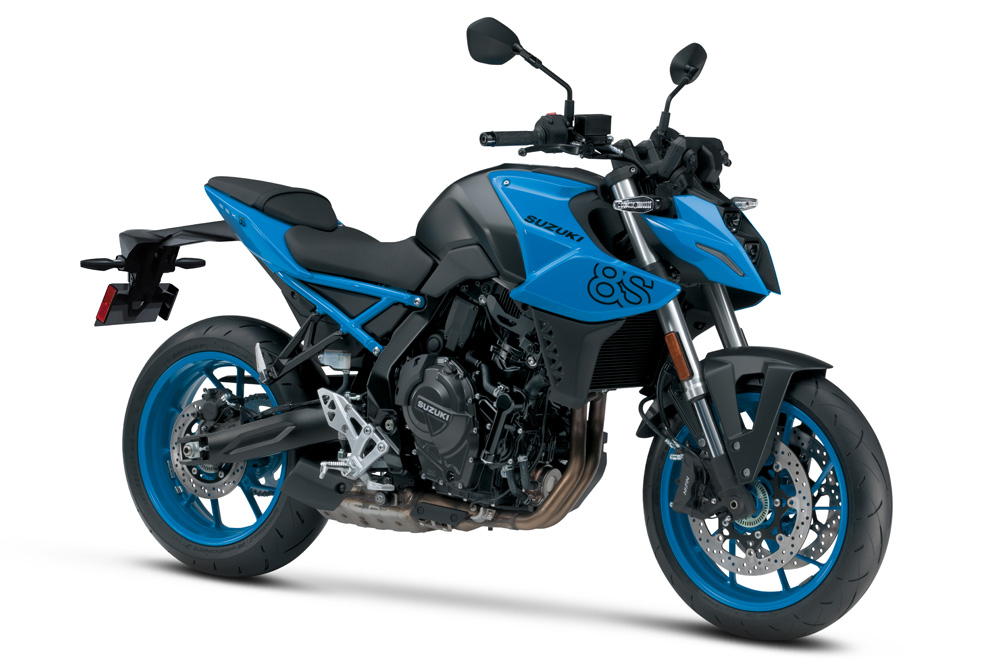
2023 Suzuki GSX-8S Specifications
| MSRP: |
$8849 |
| Engine: |
Parallel-twin |
| Displacement: |
776cc |
| Drivetrain: |
8-valve, DOHC |
| Bore x stroke: |
84 x 70mm |
| Fuel injection: |
Electronic fuel-injection system, 42mm throttle body |
| Compression ratio: |
12.8:1 |
| Cooling System: |
Liquid |
| Exhaust: |
2-1 |
| Transmission: |
6-speed |
| Clutch: |
Wet, multi-plate, slip and assist |
| Electronics: |
Three Riding Modes, ABS, Traction Control |
| Chassis: |
Tubular steel |
| Front suspension: |
Inverted fork, non-adjustable |
| Rear suspension: |
Showa monoshock, adjustable preload adjustment |
| Front brake: |
Twin 320mm discs, Nissin 4-piston radial monobloc calipers |
| Rear brake: |
Single 240mm disc, Nissin single piston caliper |
| Front tire: |
Dunlop Roadsmart 2 120/70ZR17M/C (58W) |
| Rear tire: |
Dunlop Roadsmart 2, 180/55ZR17M/C (73W) |
| Rake: |
25° |
| Trail: |
3.8 in. |
| Wheelbase: |
57.7 in. |
| Seat height: |
31.9 in. |
| Fuel capacity: |
3.7 gal. |
| Weight (curb, claimed): |
445 lbs. |
